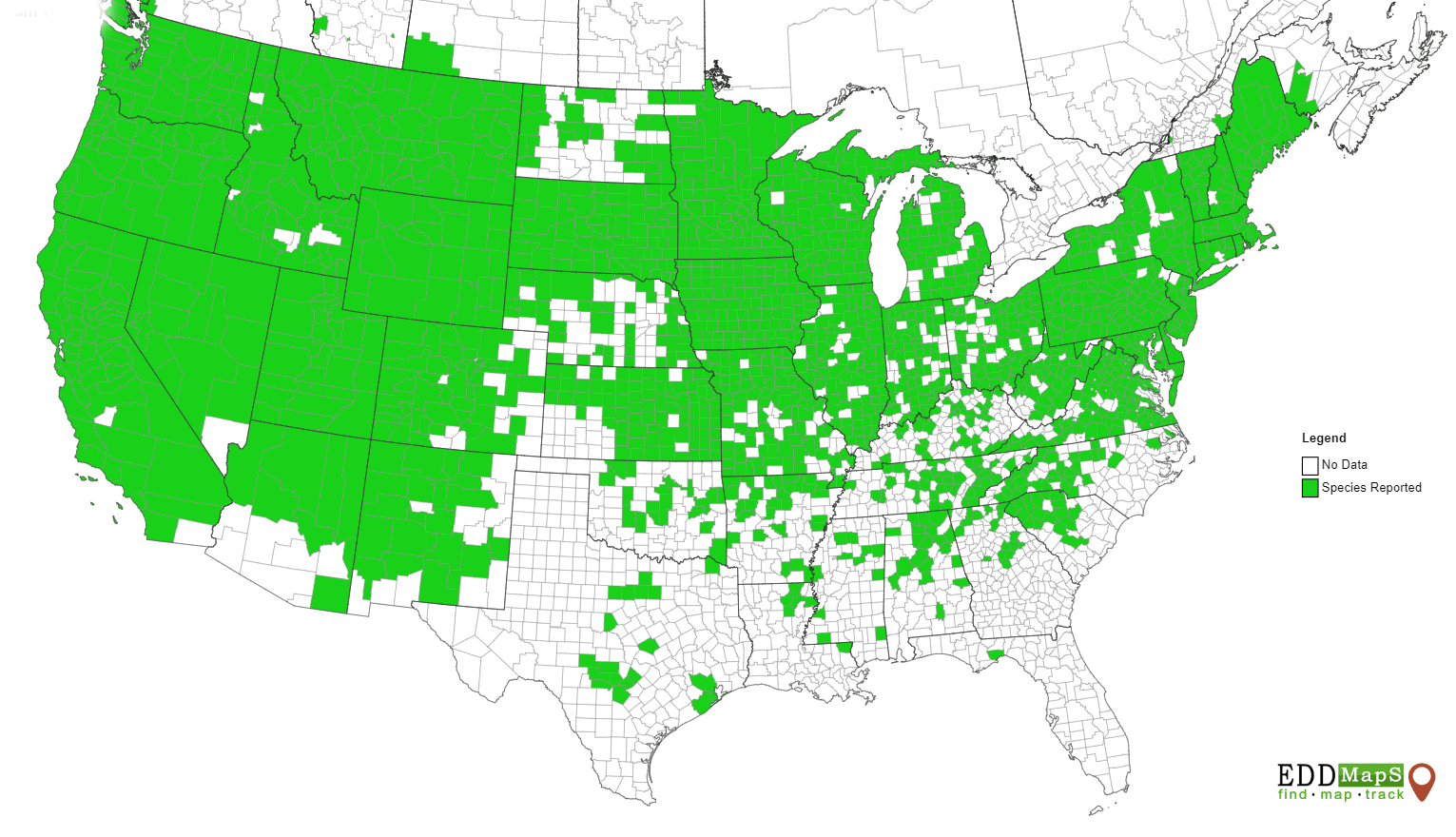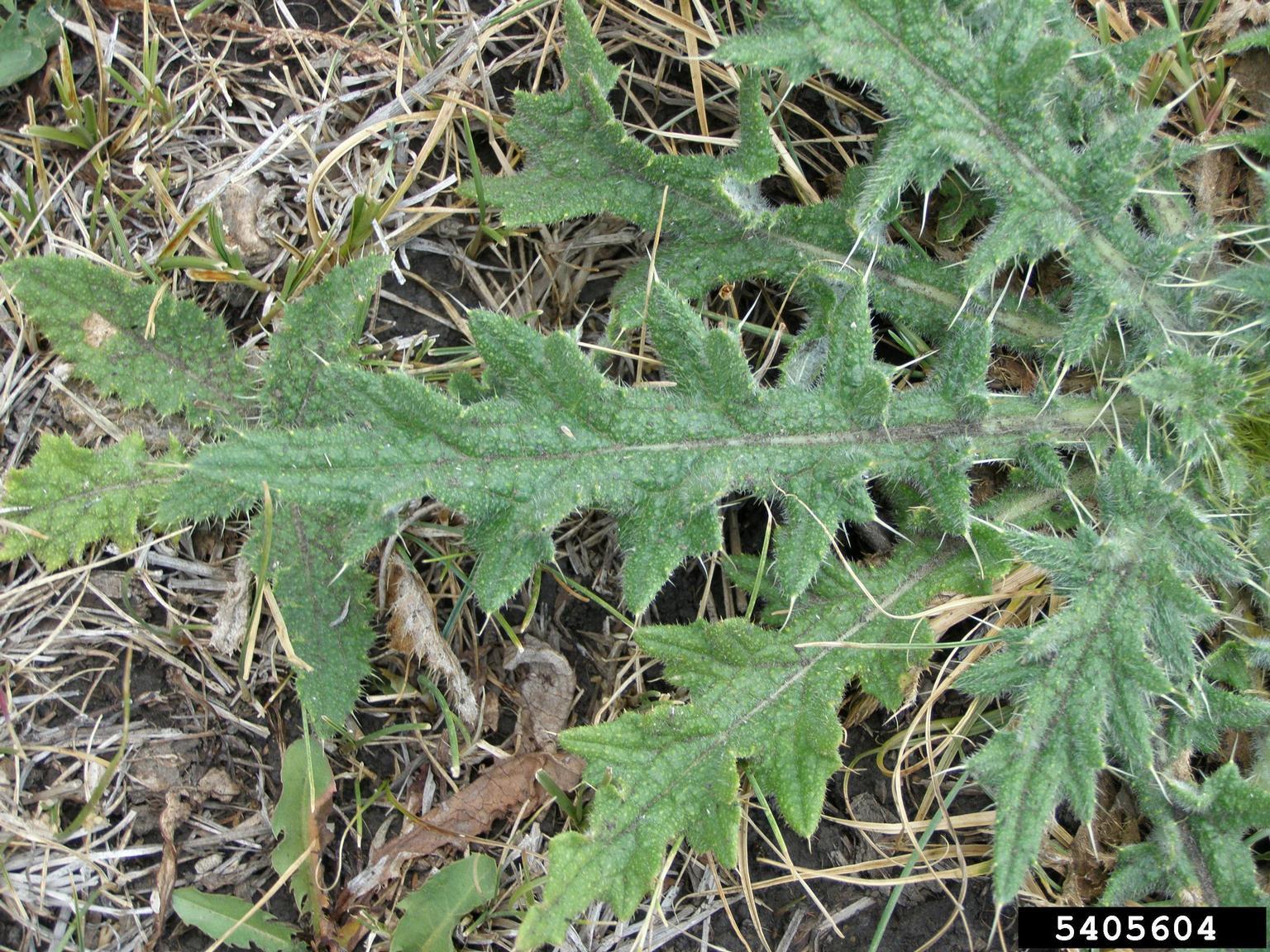From Fall 2022 issue of Branching Out. Subscribe to Branching Out here. Read more Invasives in your Woodlands spotlights here.
We wrap up our year-long series about invasive thistles in Maryland with a look at the bull thistle. It is native to Europe, northern Africa, and western Asia, and was introduced to the eastern United States during the 18th century and the western states in the 19th. This species is widespread across the U.S., especially in the far west and Rocky Mountain states, the upper Great Lakes states, and the northeast. It is also found throughout the mid-Atlantic states, becoming less frequent south of Virginia. As with other species in this series, there is some disagreement over its distribution in Maryland. EDDMapsS.com shows no reports in Allegany, Queen Anne’s, Somerset, St. Mary’s, and Charles Counties, as well as Baltimore City, while the Maryland Biodiversity Project documents it across the state. See the map below. Regardless of its actual presence, it has been declared as a noxious weed in Maryland, along with Pennsylvania and four other states.

What is it?
Bull thistle (Cirsium vulgare) is a biennial invasive plant that in its first year grows a single rosette up to three feet in diameter with a tap root of up to two feet in length. In the second year, a stem with spiny wings emerges. It can invade almost any type of disturbed area, such as forest clearcuts, riparian areas and pastures. It prefers areas of full sun in which to grow. They form dense thickets, displacing other vegetation. Wildlife and livestock find the spiny stems not just unpalatable but potentially injurious, due to the length of the spines.
How does it spread?
This invasive spreads primarily via seed production. Each flower produces up to 250 fluffy seeds; each plant can produce up to 4,000 in a season. The seeds are easily borne dozens of feet by the wind. Additionally, the seeds can be transported to new areas by human and animal traffic, where they can colonize disturbed areas. The seeds can be viable in the soil for over ten years.
How can I identify it?
Bull thistle is similar in appearance to Canada thistle; both have spiked leaves and display large purple flowers from July to September. One difference between the two is that bull thistle has a tap root and is a biennial plant. Another is the stalks, which has spiny wings the length of its needle-shaped stem. Scientists at Acadia National Park write that “Bull thistles have also been described to be larger and ‘meaner-looking’ than the Canada thistle.” Its leaves are lance-shaped, 3-12 inches long, with stout spines on the lobes. The leaves have prickly hair on the top and are very hairy underneath. It grows to maturity over the course of two years, reaching 7 feet in height, with seed production and dissemination following. Individual plants die at the end of the second year. See the photo gallery below.
How can I control it?
It is important to properly identify bull thistle before attempting control methods, as several native species of thistles have similar characteristics. Once confirmed, there are a few options available to control the existing plants and to prevent the spread of new ones. Hand-pulling young plants, or any method that severs the taproot below ground level, will kill the plant. However, existing seeds in the soil may lead to additional growth, so re-seeding with native species is recommended. Similarly, mowing needs to be followed by re-seeding. Applying a herbicide in the fall of the rosette stage can be effective to prevent sprouting in the following year.
For more information:
Learn more about bull thistle:
Invasive Plant Profiles: Canada and Bull Thistles (National Park Service)
Cirsium vulgare (US Forest Service)
Weed of the Week: Bull Thistle (US Forest Service)
Invasive Plants in Pennsylvania: Bull Thistle (PA Dept. of Conservation and Natural Resources)
